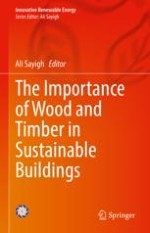2022 | OriginalPaper | Buchkapitel
9. Laminated Timber Buildings: An Overview of Environmental Impacts
verfasst von : Rahman Azari, Maryam Singery
Erschienen in: The Importance of Wood and Timber in Sustainable Buildings
Aktivieren Sie unsere intelligente Suche, um passende Fachinhalte oder Patente zu finden.
Wählen Sie Textabschnitte aus um mit Künstlicher Intelligenz passenden Patente zu finden. powered by
Markieren Sie Textabschnitte, um KI-gestützt weitere passende Inhalte zu finden. powered by
